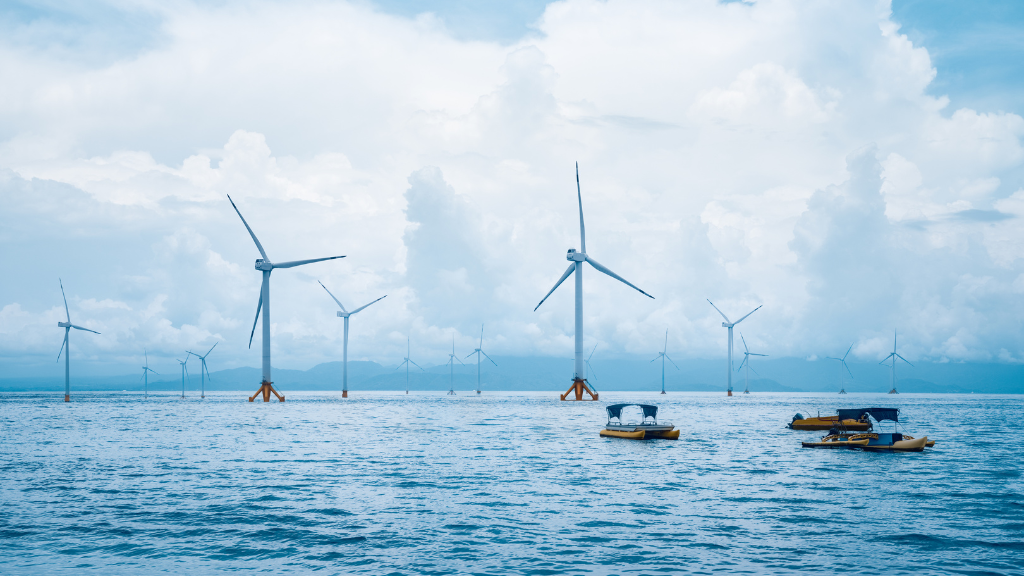When it comes to renewable energy, wind power stands out as one of the fastest-growing sources worldwide. It has huge potential for expansion, and recent developments point to exciting times ahead for the high seas.
There was a pivotal moment last month when an auction for offshore sites signalled the beginning of the United States’ first floating wind turbines. Spanning 370,000 acres and selling for a fetching $757 million, the auction is a testament to the growing interest and investment in offshore wind technology[1].
Riding the Winds of Change
Floating wind turbines, a concept that once seemed a distant dream, are now closer to reality. Anchored to the ocean floor, they represent a significant leap in renewable energy technology. While floating turbines have been part of demonstration projects globally, their evolution into larger-scale projects is a sign of their growing feasibility and acceptance.
Traditional offshore wind projects have been successful in regions like the UK, China, and Germany. However, geographical limitations call for innovative solutions like floating turbines.
With about 125 megawatts of floating wind power already installed and another 125 megawatts under construction globally, the industry is gearing up for a significant expansion. The UK and other countries like South Korea, Australia, and Brazil are leading the way in planned offshore wind capacity, with more than 60 gigawatts in the pipeline[2].
The Challenging Path Ahead
The journey from concept to power generation will come with challenges, yet the potential benefits are huge. Companies have a long road ahead, with years of planning, construction, and regulatory navigation before sites begin generating power.
Costs vs. Innovation
A key factor in the success of floating offshore wind is cost. Currently, the cost is significantly higher than land-based wind, solar, and even fixed offshore wind. As with other renewable technologies though, costs are expected to decrease with widespread adoption and technological advancements.
A significant development in this space is the vertical axis wind turbine – a design that deviates from the traditional horizontal axis[3]. This technology offers advantages like a lower centre of gravity and reduced maintenance costs. Also, we are seeing initiatives like the ARPA-E’s ATLANTIS floating offshore wind program in the US, which aims to explore innovative designs for deep-water applications[4].
Next-Generation Drivetrain Technologies
The industry is also keeping an eye on next-generation drivetrain technologies. Research led by the U.S. Department of Energy’s National Renewable Energy Laboratory (NREL) and General Electric Research is looking at alternatives to traditional designs, aiming to increase power output while reducing costs[5].
Offshore Innovations Steering Toward a Sustainable Future
The offshore wind industry is at the edge of a transformative era. With innovations like floating turbines and vertical axis designs, coupled with ongoing research into drivetrain technologies, offshore wind is ready to play an important role in our renewable energy future. The high seas hold the key to unlocking huge wind energy potential, promising a cleaner, more sustainable world.
Footnotes
- https://www.technologyreview.com/2022/12/08/1064499/new-technology-offshore-wind-floating/#:~:text=,That’s%20significantly%20more
- ibid.
- https://cleantechnica.com/2023/11/14/new-floating-offshore-wind-turbine-features-vertical-axis-technology/#:~:text=,floating%20offshore%20wind%20design
- ibid.
- https://techxplore.com/news/2023-08-next-generation-drivetrain-technologies-offshore-turbines.html


